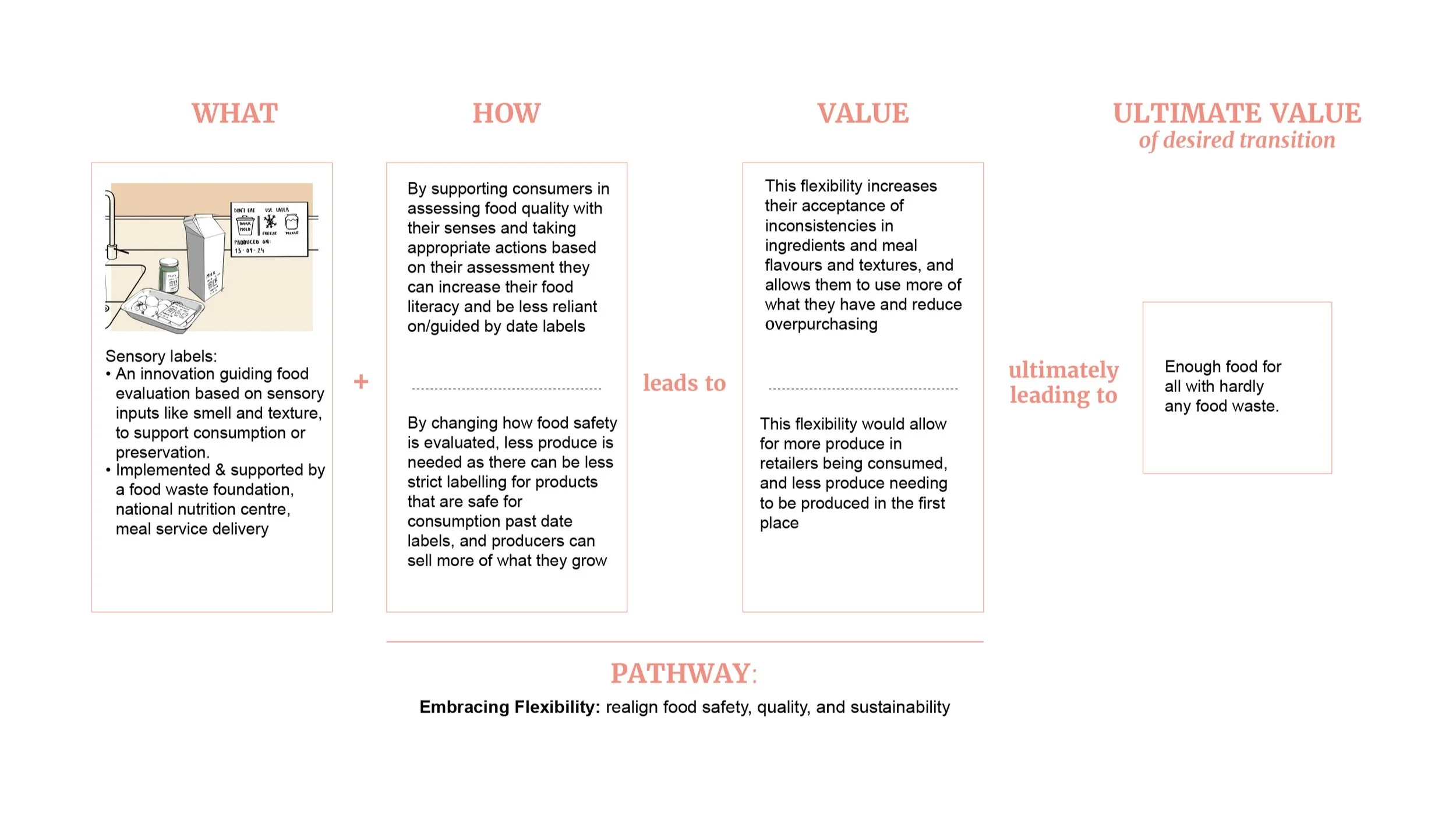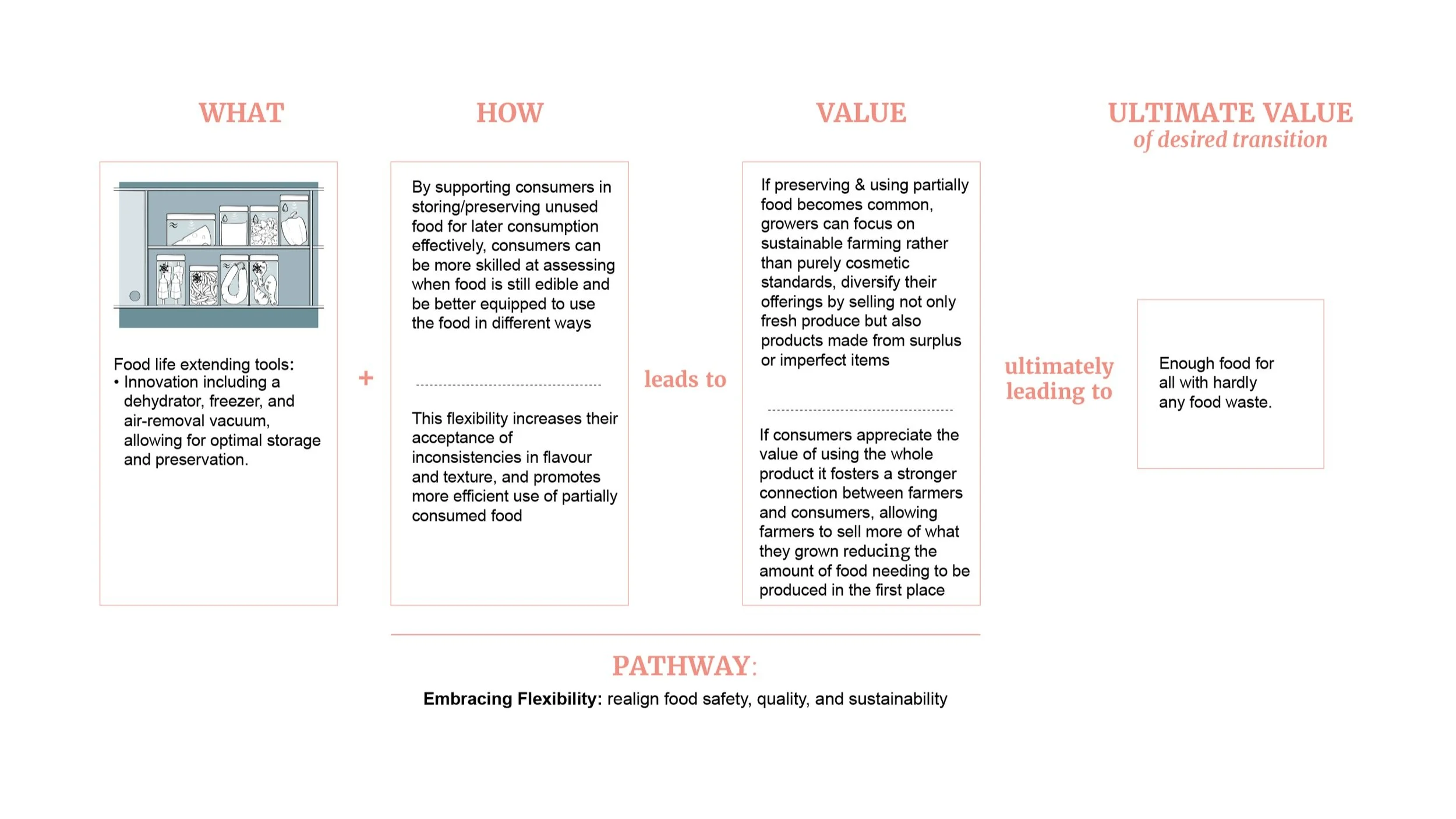
Developing reasoning for credible and strategically aligned proposals
Design reasoning for systemic innovation
People involved
Hannah Goss (me)
Jotte de Koning
Nynke Tromp
Rick Schifferstein
FETE consortium
Project Output
Conference Paper
When
During PhD
Challenge
In recent years, designers have become increasingly active in addressing societal transitions, leveraging design and social innovation to drive systemic change. Typically designers begin with the intended outcomes they wish to achieve and work backwards to formulate an intervention and mechanism to achieve those outcomes. However, in complex design challenges this reasoning becomes more complex because there are more considerations to take into account, such as multiple stakeholders, diverse knowledge fields, and multiple system scales (macro, meso, micro) and timeframes (now, near future, far future).
For designers to develop innovations capable of fostering societal change, they must establish robust reasoning that clearly connects systemic goals with actionable outcomes, balancing societal impact, business viability, and planetary sustainability. Such clear reasoning not only enhances the confidence in proposed interventions but also fosters greater alignment and buy-in from stakeholders.
Yet, little is known about how designers can be supported in making design decisions and developing clear argumentations for how proposed interventions foster desired transition, and how an explicit logical framework can support this.
Approach
Design reasoning
Development workshops
Evaluative workshops
I created the Transition Design Logical Framework to help designers navigate complex societal transitions and develop effective intervention proposals. The framework was shaped through work with stakeholders focused on transitioning the Dutch food system to reduce household food waste. I used it to enhance the design reasoning behind intervention proposals and refine their alignment with systemic goals.
To ensure the framework’s versatility, I tested it in two workshops with design practitioners and master’s students. These workshops explored diverse topics, from energy transitions to food waste reduction and youth participation. They provided valuable insights into how the framework helps designers frame societal challenges and conceptualise impactful interventions.
Logical Framework
Outcomes
Logical framework
Transition design reasoning
Transition design rationale
My Transition Design Logical Framework centres on the following key elements:
Ultimate Values and Pathway: These define the social and environmental goals of the desired transition and outline a strategic trajectory towards achieving them. The pathway highlights the new roles and dynamics interventions should support to foster systemic change.
Behaviours, Mechanisms, and Values Offered: This focuses on the behaviours needed at both individual and systemic levels to align with the pathway. It also considers the value these changes bring, such as promoting sustainable food practices or reducing overproduction, which can benefit individuals while addressing systemic sustainability goals.
Intervention Proposal: This defines the interventions—products, services, policies, etc.—that can drive the transition. A portfolio approach is encouraged, allowing designers to develop multiple, coherent interventions. Examples include tools to help households assess food quality, campaigns to reduce waste, and technologies to track resource use.
The framework simplifies the complexity of transition challenges, making them manageable for designers while maintaining a focus on broader societal and planetary goals. It helps connect short-term actions to long-term outcomes, providing structure to the design process and enabling focused iteration.
Through workshops, the framework proved valuable in helping designers articulate their reasoning, align their proposals with systemic goals, and communicate their ideas clearly to stakeholders. It fosters credibility, strategic alignment, and actionable solutions, encouraging designers to make explicit connections between their ideas and the intended outcomes.




